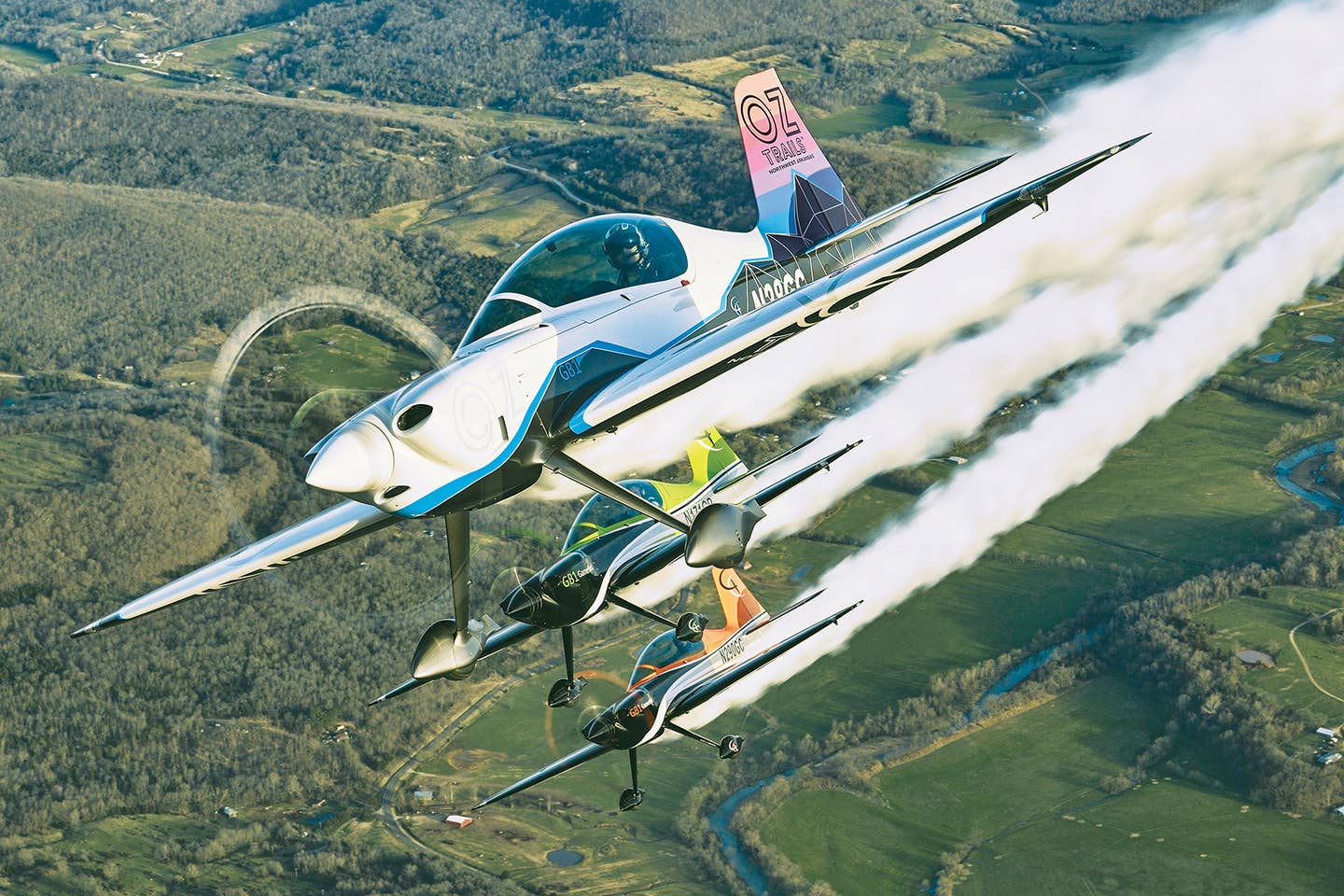GameBird GB1 Offers Aerobatics In An Everyday Traveler
In less than a decade, this multi-mission airplane has scored great success.

The GameBird GB1 is an aerobatic airplane that can also serve as an everyday traveler. [Courtesy: Katsuhiko Tokunaga/ Game Composites]
When Philipp Steinbach set out to develop a new aerobatic airplane in 2013, he aimed to produce one that could also serve as an everyday traveler. What resulted was the GameBird GB1—a sleek composite, two-seat tandem, glass-canopy-covered beast with a 303 hp Lycoming engine built by Game Composites in Bentonville, Arkansas. What the company has achieved in just a few years—with 50 aircraft now built—is simply remarkable.
The GameBird was first introduced at EAA [Experimental Aircraft Association] AirVenture in Oshkosh in 2016. It was yet to be certified and the company was in the process of relocating from Great Britain—where Steinbach started aircraft development—to its current head-quarters in Bentonville. At that time, aerobatic performer and world champion Rob Holland gave me an impressive demonstration of what the airplane can do.
Knowing the complexities of aircraft certification, I expected that it would be years before the GB1 would get the coveted sign off. When it achieved both FAA and EASA [European Union Aviation Safety Agency] certification in 2017, I was honestly stunned. How was this possible?
Steinbach had teamed up with Steuart Walton—the grand-son of the founder of Walmart and a successful entrepreneur in his own right—who provided the financial backing critical to the success of aircraft certification and production. But money certainly isn’t enough. “We were a small, focused team,” Steinbach says. “We were at the right place, at the right time, with the right product, and we all were very strongly motivated to do it.” Steinbach also says he was not afraid to ask the FAA for help. “The MIDO [manufacturing inspection district office of the FAA] was actually pretty helpful,” he says.
Since I first flew the airplane in 2016, Game Composites has made several upgrades. The interior has been vastly improved with exquisite leather adorned with thick stitch-ing. A Garmin G3X Touch dominates the panel, and there is a taxi camera that helps the pilot see what’s ahead on the ground without having to make large S-turns.
As of this writing, 50 GB1s have come out of the factory so far, with plans to build an additional 17 this year, Steinbach says. Customers are required to have a private pilot certificate and a tailwheel endorsement to pick up their airplane, but they get 10 hours of inhouse transition training included with their purchase.
“The squawk list of a new airplane is really down to almost nothing,” Steinbach says. “That’s the kind of thing we’re trying to keep up. Instead of growing faster, we decided to grow better.” As a result, the customers appear happy.
One of those customers is Ben Marcus, a highly successful aviation entrepreneur and investor in Santa Monica, California. I had a chance with him to once again climb into the GameBird at the Santa MonicaMunicipal Airport (KSMO) this spring. We climbed to the special flight rules area (SFRA),which lies right over the Los Angeles International Airport. In a Cessna 172, the best way to get there is with a 270-degree right turn, but the GB1’s climb performance allowed us to hang a left directly to the entry point. From there,we flew to a very scenic aerobatic practice area off the coast of the Palos Verdes peninsula. Marcus took me for a joyride that included maneuvers such as hammerheads, Cuban eights, loops, and a tail slide, making pretty smoke patterns over the Pacific Ocean. The smoke oil system is—by the way—included.
While Marcus loves aerobatics, he uses his GB1 for a wide range of missions. He regularly throws a large duffel bag in the luggage compartment—which can carry up to 33 pounds—fills the tanks with 81 gallons, and takes off on long cross-country flights. On one recent business trip in the GB1, Marcus covered Dallas, Texas; Atlanta, Georgia; Nashville, Tennessee; and St.Louis, Missouri, before heading back to Santa Monica. He also uses his GB1 for formation flying with a few other GB1 owners in the SoCal area. After six months of ownership, he had already put 100 hours on his airplane. “I love it,” Marcus says. “I literally don’t stop thinking about it when I’m not flying it.”
Steinbach credits much of his success to a dedicated Game Composites team that takes pride in their product and has now grown to 72 employees. The company has been able to retain experienced people through incentives, such as complimentary flight training for a private pilot certificate through the company’s flying club. Thereare also plans for a new, yet-to-be-announced airplane, which is causing Game Composites to expand its footprint in Bentonville from 45,000 square feet to about 120,000 square feet.
| GAMEBIRD GBI |
| Load Limits: +/-10 G |
| Length: 23 feet |
| Wingspan: 25.3 feet |
| Maneuvering Speed: 175 knots |
| Roll Rate: 400 degrees per second |

Subscribe to Our Newsletter
Get the latest FLYING stories delivered directly to your inbox






